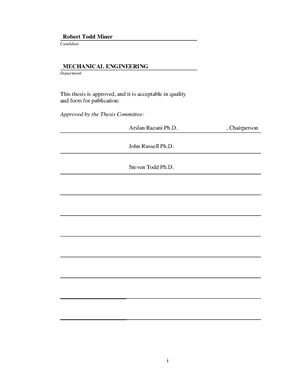Bachelor of Science in Mechanical Engineering program. University
of New Mexico, Albuquerque, New Mexico, USA, 2012. – 110 p.
Interior ballistics are the events in a gun system that determines
the performance of any gun design. In order to efficiently design
any gun system the inteal ballistics should be understood to
minimize energy losses and correctly define design parameters. The
goal of this computational model is to develop a ballistics model
to aid in gun design. A computational analysis of the dynamics
events aids in the design of the gun system by providing output
information such as pressure, velocity, charge buout, and
projectile distance versus time profiles. By applying the chemical
and physical parameters of the propellant, gun breech geometry,
projectile mass and gun barrel parameters, one can iterate through
design parameters in an attempt to improve gun performance. There
will be several computational models describing the main program
being a lumped parameter inteal ballistics analysis. The muzzle
velocity of the model has been validated with empirical testing to
at least one gun system and being applied to other gun systems for
further validation on different designs. The validation of the
muzzle velocity and breech pressure will build confidence in the
model and allow for the model to be further developed into a more
user friendly program.
Contents:
Abstract.
Chapter I. Introduction.
Introduction.
Chapter II. Interior ballistic modeling.
Ballistics Problem.
Pressure-Travel Curve.
Numerical Techniques.
Chapter III. Model comparison.
Gun Models.
PAN Disruptor.
Thunder Range Powder Gun Results.
Chapter IV. Discussion.
Model Difficulties.
Model Limitations.
Chapter V. Conclusions.
Summary.
Lessons Leaed.
Future Work.
References.
Abstract.
Chapter I. Introduction.
Introduction.
Chapter II. Interior ballistic modeling.
Ballistics Problem.
Pressure-Travel Curve.
Numerical Techniques.
Chapter III. Model comparison.
Gun Models.
PAN Disruptor.
Thunder Range Powder Gun Results.
Chapter IV. Discussion.
Model Difficulties.
Model Limitations.
Chapter V. Conclusions.
Summary.
Lessons Leaed.
Future Work.
References.

